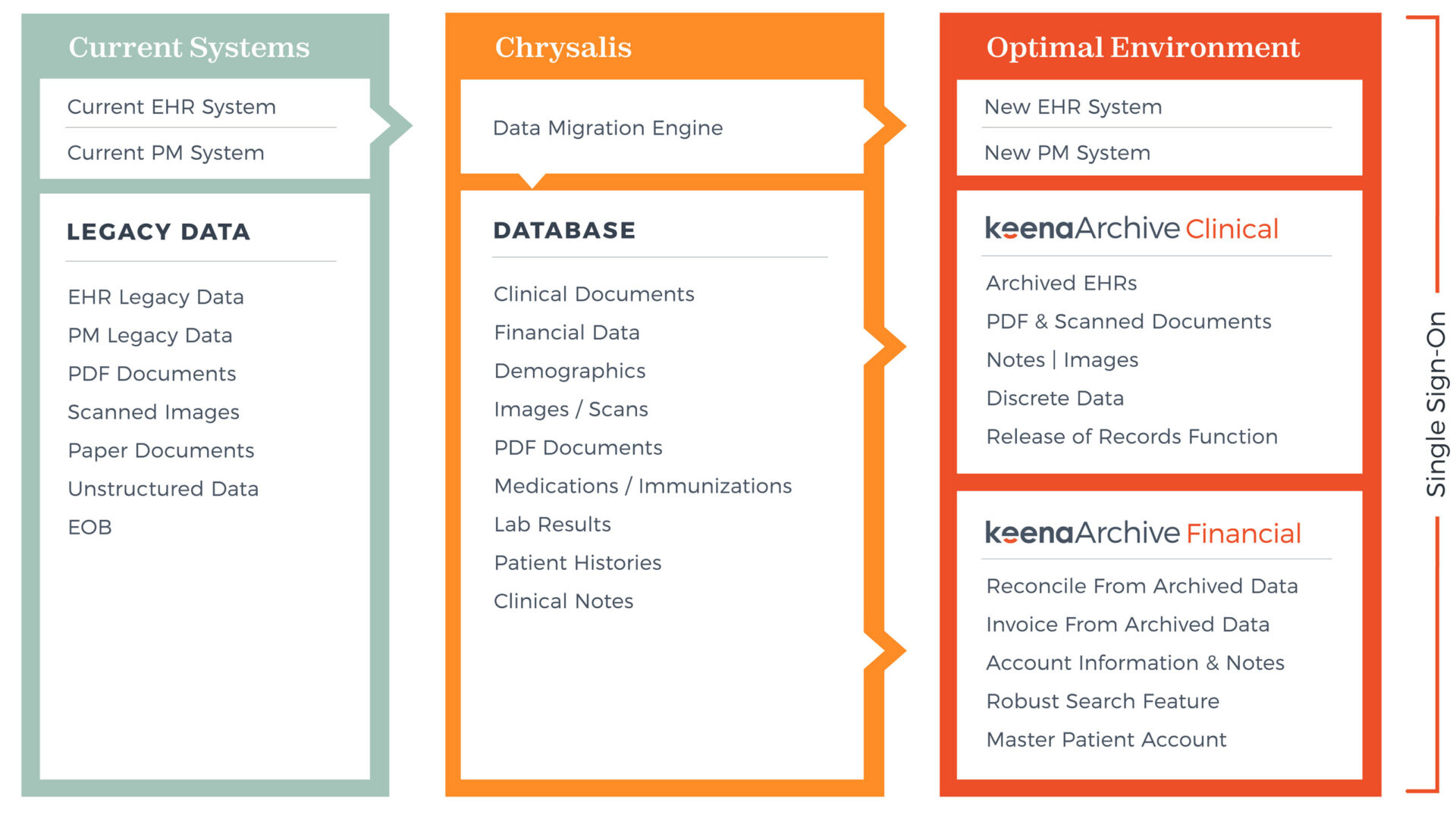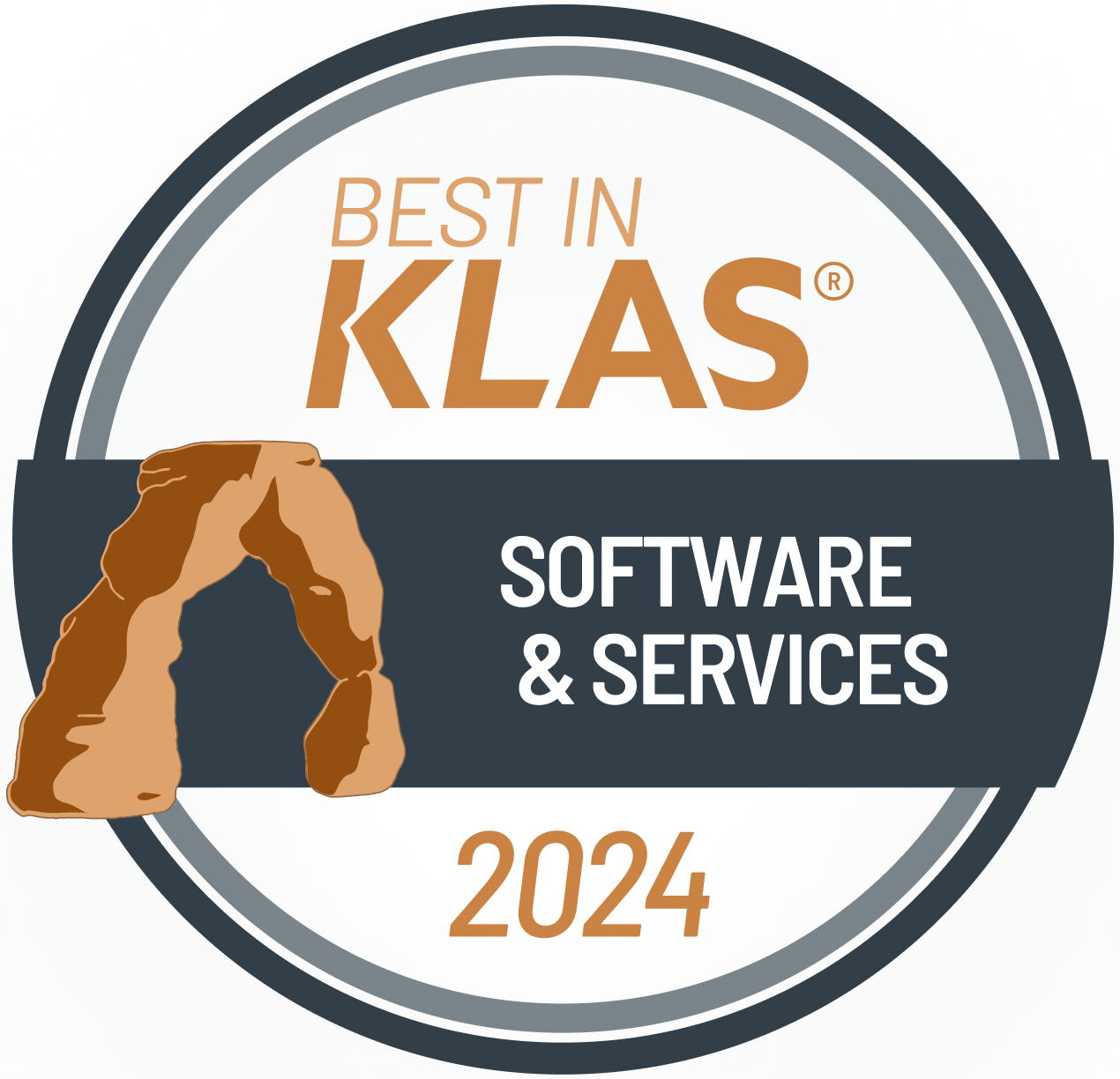Data Management Solutions
for your PM & EHR.
Solving many challenges as practices migrate or consolidate systems.

Practices
|
Ambulatory Clinics
|
HIE Networks
|
Hospitals & Health Systems
We are data migration experts. Our team has extensive experience with extracting and converting data between the leading EHR and PM systems on the market. Over time, through innovation, rigorous quality control and automation, we have perfected our processes to ensure the safe and accurate transfer of data. If you are shifting to a new EHR, let us perform a high-quality conversion that will shorten your timeline, reduce conversion costs and quickly bring your new system online.
The Keena Migration Guide
Read our four part mini-series focused on the art of migrating from one EHR to another. Learn about common pitfalls, data planning, and our recommended solutions for a successful migration.
An End-To-End Data Management Solution
Solving many challenges as practices migrate or consolidate systems.
Master Patient Index
Eliminate duplicate patient records across all EHR & PM Systems.
Data Migration Services
Convert and migrate EHR and PM data into your new system.
Archival Records
Archive and access legacy patient clinical and financial records.
Records Release
Quick and easy output and release of patient records.

550
Large and small data extraction and conversion projects.
/
40+
Assisted health organizations with EHR conversions, including those using Epic EHR.
/
75
Leading EHR and PM Vendors Converted to Data
/
300M
Combined Healthcare Charts Converted
A Sample of the Systems We Work With
Abraxas
Advanced Data Systems
Allscripts Practice Management
Allscripts Professional EHR
Altera TouchWorks
Amazing Charts
Athena
Care360
CareGiver
Cerner
Chart Logic
ChartWare
CureMD
eClinicalWorks (eCW)
eMD’s
EPIC
Greenway Intergy
Greenway Prime Suite
Health McKesson
Medent
MediNotes
MedPlexus
Meditech
Meridian
MicroMD
Mosaiq
Mysis EHR
Mysis Vision
NextGen
Paragon
PenChart
Practice Partners
Practice Studio
SOAP Notes
SRS
STI ChartMaker
Archival Solutions
It may not be practical or possible to convert all the relevant clinical and financial data from your old systems to your new. Yet it’s crucial for patient care, collections and legal reasons that you “leave no data behind.” KeenaArchive provides access to archived clinical and financial data from legacy systems, subject to compatibility and integration considerations. There’s no need to keep your legacy EHR or PM systems running, along with the maintenance and licensing headaches that go along with that. KeenaArchive can be configured to operate as a module inside most leading EHR and PM systems, subject to compatibility and integration considerations, avoiding the need for clinicians and back office staff to log into multiple systems to see historic patient information.
